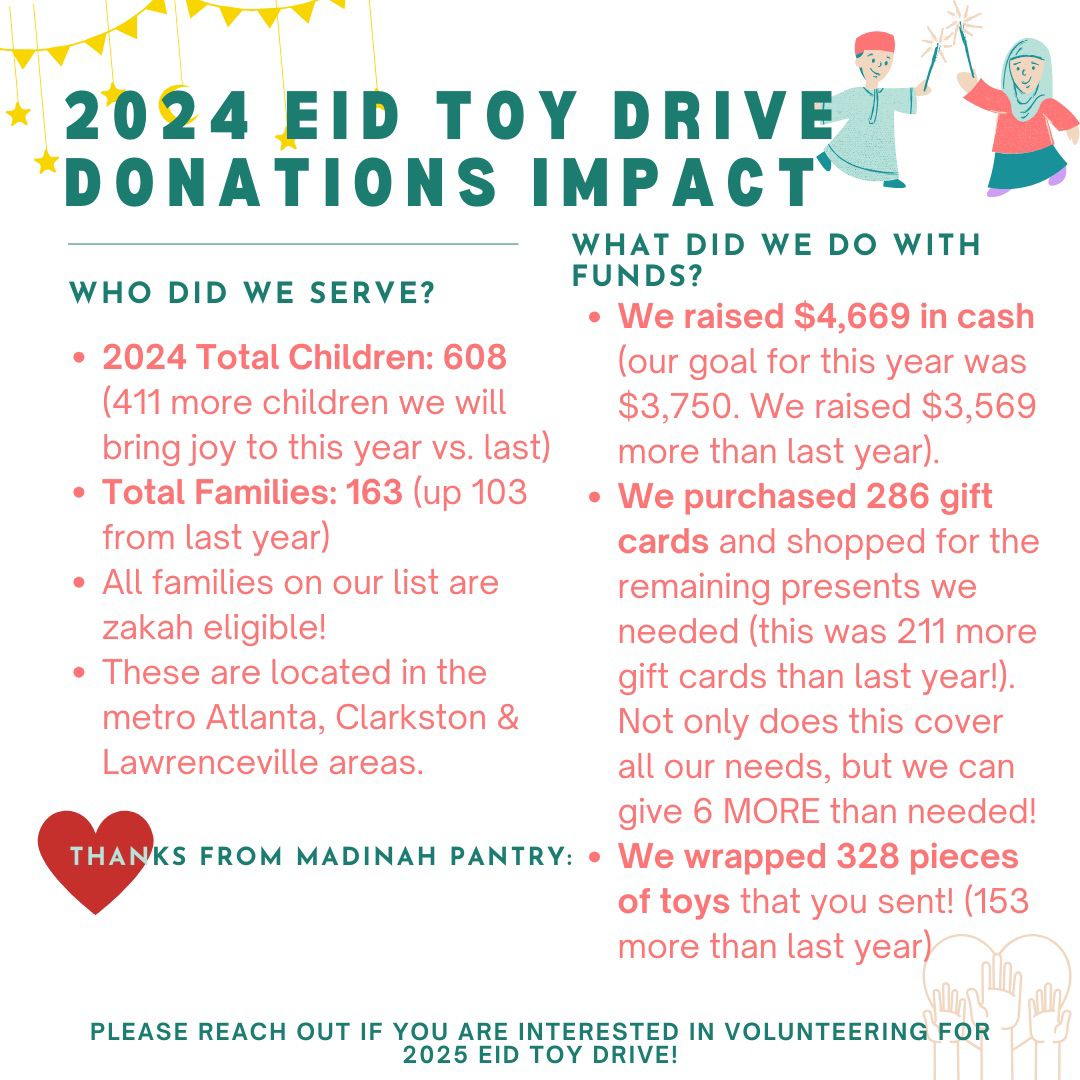The following statistics were obtained from:
http://www.acfb.org/advocacy_and_education/facts_and_links/ .
It is apparent from these staggering statistics how important it is to provide food for families in need which include those families struggling due to various current economic conditions or single parent or elderly families who are on limited incomes. Muslim food pantries are even more limited with less than five in the entire state of Georgia which serve the needs of Muslim families. Even those families who do receive some supplemental assistance (food stamps or WIC) still run out of food sometime during the month. There is a dire need for Muslims to step up and support those Muslim food pantries in existence by donating food or supporting the food pantries financially.
Hunger and Poverty in Georgia
Feeding America’s Child Food Insecurity Study, released in August of 2011, revealed that 27.9% of Georgia’s children live in food insecure households – more than 700,000 children under age 18. This means only 72.1% of Georgia’s children live in households that are food secure. The USDA defines food insecurity as the lack of access to adequate food resulting from the lack of money and other resources. (Feeding America, Map the Meal Gap: Child Food Insecurity 2011. Data released Aug. 2011)
According to the latest US Census Bureau American Community Survey report released in September 2011, 24.8 % of Georgia’s children live in poverty – up from 22.3% last year. That’s more than 600,000 children under age 18. (U.S. Census Bureau, American Community Survey Profile. 2010. Data released Sept. 2011)
Nearly 1.7 million Georgians (17.9%) are living in poverty according to the latest US Census Bureau American Community Survey report released in September 2011. This is up from 1.6 million (16.5%) in 2009, and represents an increase of 100,000 people in poverty. (U.S. Census Bureau, American Community Survey Profile. 2010. Data released Sept. 2011)
15.6 percent of Georgia households experienced low food security from 2008-2009. Food Security is defined as access to enough food for an active, healthy life. (USDA Household Food Security in the United States, 2009. Data released November, 2010)
An estimated 1.4 million different Georgians receive emergency food from partner agencies of Georgia food banks. (Feeding America “Hunger in America 2010” Study)
Among households with school age children, 67% of children from client households surveyed in the Hunger in America Study participate in the federal school lunch program while only 14% participate in the federal summer food program. (Feeding America “Hunger in America 2010” Study)
Georgia’s unemployment rate has increased significantly over the past three years. As of November, 2011, the Georgia Department of Labor’s website (http://www.dol.state.ga.us/) posted the Georgia Unemployment rate at 10.3% (from 6.2% in July of 2008) and the national unemployment rate at 9.1%. You can check the Georgia DOL website regularly to see updated numbers.
(Georgia Dept. of Labor, November 2011)
10.7 percent – more than one in every ten senior citizens in Georgia – are living in poverty. (U.S. Census Bureau, American Community Survey Profile, 2010. Data released Sept. 2011)
The number of Georgia households receiving food stamps jumped from 581,709 total households in July of 2009 to 716,749 households in July of 2010 – an increase of 23.2% in just one year. (USDA Food and Nutrition Service, Data and Statistics Supplemental Nutrition Assistance Program – Number of Households Participating, released Oct. 2010)













